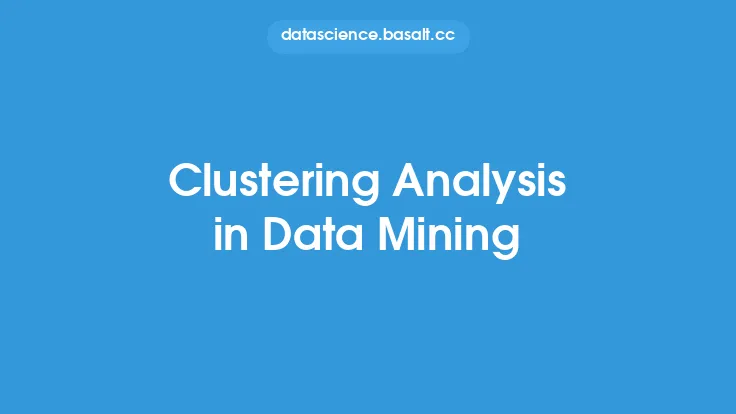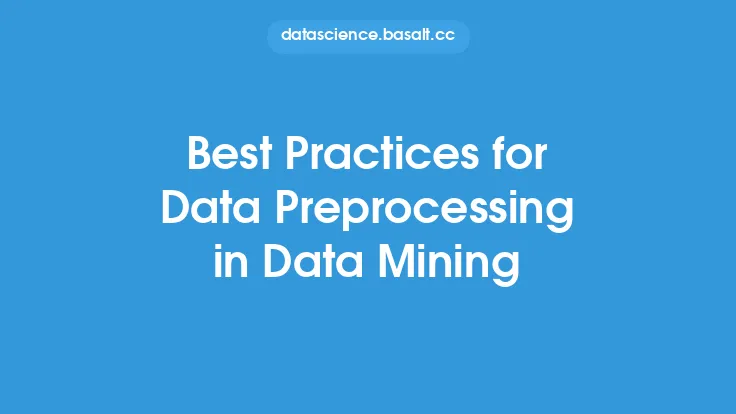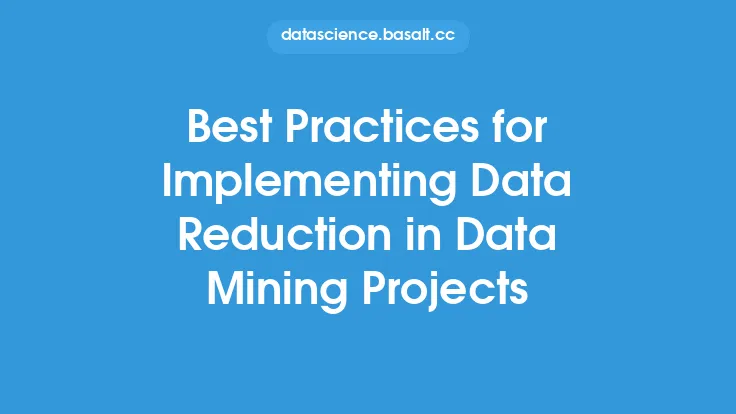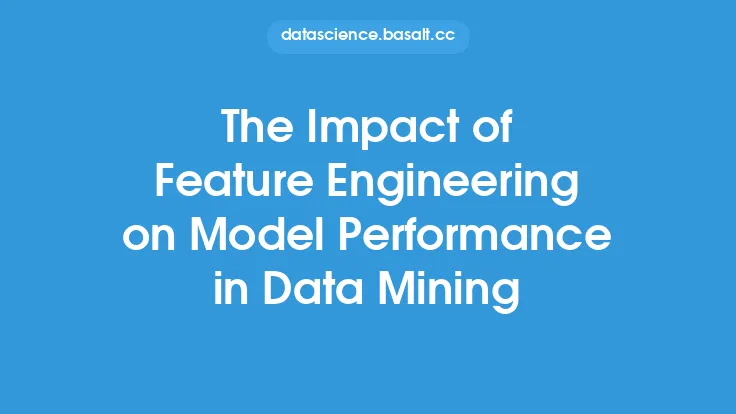Regression analysis is a fundamental concept in data mining that involves the use of statistical methods to establish a relationship between a dependent variable and one or more independent variables. The primary goal of regression analysis is to create a mathematical model that can predict the value of the dependent variable based on the values of the independent variables. In data mining, regression analysis is used to identify patterns and relationships in large datasets, which can be used to make predictions, identify trends, and inform business decisions.
Introduction to Regression Analysis
Regression analysis is a type of supervised learning algorithm, which means that it is trained on labeled data. The algorithm learns from the data and creates a model that can be used to make predictions on new, unseen data. Regression analysis is commonly used in data mining to solve problems such as predicting continuous outcomes, identifying relationships between variables, and forecasting future trends. There are several types of regression analysis, including simple linear regression, multiple linear regression, logistic regression, and polynomial regression, each with its own strengths and weaknesses.
Types of Regression Analysis
Simple linear regression is the most basic type of regression analysis, which involves a single independent variable and a single dependent variable. The relationship between the variables is modeled using a linear equation, which is typically represented by a straight line. Multiple linear regression, on the other hand, involves multiple independent variables and a single dependent variable. The relationship between the variables is modeled using a linear equation, which is typically represented by a hyperplane. Logistic regression is a type of regression analysis that is used to predict binary outcomes, such as 0 or 1, yes or no, etc. Polynomial regression is a type of regression analysis that involves a non-linear relationship between the variables, which is modeled using a polynomial equation.
Assumptions of Regression Analysis
Regression analysis assumes that the data is normally distributed, which means that the data follows a bell-shaped curve. The data should also be free from outliers, which are data points that are significantly different from the rest of the data. Additionally, regression analysis assumes that the independent variables are not highly correlated with each other, which is known as multicollinearity. If the independent variables are highly correlated, it can lead to unstable estimates of the regression coefficients. Regression analysis also assumes that the relationship between the variables is linear, which means that the relationship can be modeled using a straight line.
Regression Coefficients
The regression coefficients are the parameters of the regression model that describe the relationship between the independent variables and the dependent variable. The coefficients are typically represented by the symbol β (beta). The coefficients can be interpreted as the change in the dependent variable for a one-unit change in the independent variable, while holding all other independent variables constant. The coefficients can be positive or negative, depending on the direction of the relationship between the variables. A positive coefficient indicates a positive relationship, while a negative coefficient indicates a negative relationship.
Evaluation Metrics for Regression Analysis
There are several evaluation metrics that can be used to evaluate the performance of a regression model. The most common metrics include mean squared error (MSE), mean absolute error (MAE), and R-squared. MSE measures the average squared difference between the predicted and actual values of the dependent variable. MAE measures the average absolute difference between the predicted and actual values of the dependent variable. R-squared measures the proportion of the variance in the dependent variable that is explained by the independent variables. A high R-squared value indicates a good fit of the model to the data.
Applications of Regression Analysis
Regression analysis has a wide range of applications in data mining, including predicting continuous outcomes, identifying relationships between variables, and forecasting future trends. Regression analysis can be used in finance to predict stock prices, in marketing to predict customer behavior, and in healthcare to predict patient outcomes. Regression analysis can also be used to identify the factors that affect a particular outcome, such as the factors that affect customer satisfaction or the factors that affect employee productivity.
Common Challenges in Regression Analysis
There are several common challenges that can arise in regression analysis, including multicollinearity, outliers, and non-normality of the data. Multicollinearity can lead to unstable estimates of the regression coefficients, while outliers can affect the accuracy of the model. Non-normality of the data can also affect the accuracy of the model, as regression analysis assumes that the data is normally distributed. Additionally, regression analysis can be sensitive to the choice of independent variables, and the model can be affected by the presence of irrelevant or redundant variables.
Best Practices for Regression Analysis
There are several best practices that can be followed to ensure the accuracy and reliability of regression analysis. The data should be carefully cleaned and preprocessed to remove outliers and missing values. The independent variables should be carefully selected to ensure that they are relevant and not highly correlated with each other. The model should be regularly evaluated and updated to ensure that it remains accurate and reliable. Additionally, the results of the regression analysis should be carefully interpreted, taking into account the limitations and assumptions of the model.
Future Directions for Regression Analysis
Regression analysis is a rapidly evolving field, with new techniques and methods being developed all the time. One of the future directions for regression analysis is the development of more advanced techniques for handling non-normality and outliers. Another future direction is the development of more efficient algorithms for large-scale regression analysis. Additionally, there is a growing interest in the use of regression analysis in combination with other data mining techniques, such as clustering and decision trees. As data mining continues to evolve, regression analysis is likely to remain a fundamental tool for identifying patterns and relationships in large datasets.





